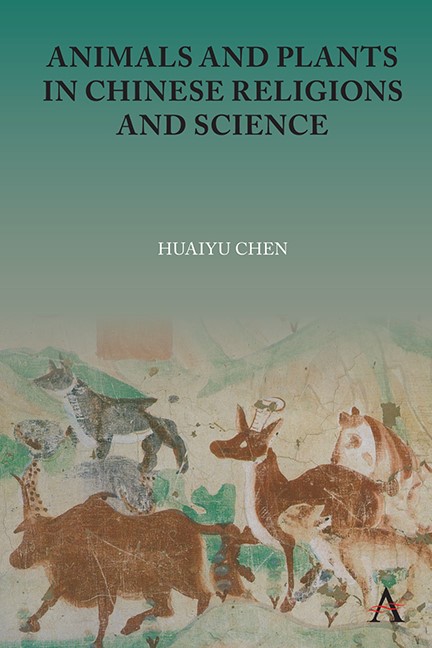Book contents
- Frontmatter
- Contents
- Acknowledgments
- List of Illustrations
- Introduction
- 1 Plant Science and Technology in Medieval China
- 2 Ordering Plants in the Buddhist World: A Medieval Botanical Taxonomy
- 3 Animal Divination and Climate: An Environmental Perspective on the Cult of the Pig
- 4 Zoomancy in Medieval China
- 5 The Changing Images of Zodiac Animals in Medieval Chinese Buddhist Literature
- 6 The Were-Tigers in Medieval China and Its Asian Context
- 7 The Animal Turn in Asian Studies and the Asian Turn in the Animal Studies
- Bibliography
- Index
5 - The Changing Images of Zodiac Animals in Medieval Chinese Buddhist Literature
Published online by Cambridge University Press: 15 November 2023
- Frontmatter
- Contents
- Acknowledgments
- List of Illustrations
- Introduction
- 1 Plant Science and Technology in Medieval China
- 2 Ordering Plants in the Buddhist World: A Medieval Botanical Taxonomy
- 3 Animal Divination and Climate: An Environmental Perspective on the Cult of the Pig
- 4 Zoomancy in Medieval China
- 5 The Changing Images of Zodiac Animals in Medieval Chinese Buddhist Literature
- 6 The Were-Tigers in Medieval China and Its Asian Context
- 7 The Animal Turn in Asian Studies and the Asian Turn in the Animal Studies
- Bibliography
- Index
Summary
Introduction
In the medieval period, specifically from the fifth to eighth centuries in the Chinese historical context, the Buddhist community produced a voluminous literature, which became an invaluable resource for understanding the roles of animals in medieval religious life. This Buddhist literature not only included numerous translations rendered from Indic and Central Asian languages such as Gāndhārī and Tocharian, or which many original texts were lost, but also commentaries and collections of magical stories. In these texts, there were encounters and adaptations between Buddhist ideas and Chinese indigenous thoughts. Unlike many other world and local religions, Buddhism developed a sophisticated cosmology in which animals occupied one of the six realms for the birth, death, and rebirth of all lives or sentient beings in Buddhist terms. The Buddhist idea of reincarnation created a blurry boundary between humans and animals. In other words, in Buddhist literature, humans may be reborn as animals and vice versa, which also applies to gods and spirits. Drawing upon sources from medieval Chinese Buddhist literature centered on the Mahāvaipulya-mahāsaṃnipāta-Sūtra (hereafter abbreviated to MMS), this chapter examines how twelve animals first appeared as compassionate deities and then as demonic spirits in these sources and how Buddhist and Chinese intellectual traditions shaped this transformation.
The MMS is a sizeable collective scripture of early Mahāyāna Buddhist texts which did not survive in its entirety in any language. Some fragments in Sanskrit have been identified as parts of this significant scripture. Among numerous Sanskrit manuscripts found in Gilgit, Khotan, and other places in Central Asia, some fragments of the Sanskrit texts have been identified as those of the Ratnaketudhāraṇī, which is equivalent to the ninth chapter (Baochuang fen 寶幢分) of the Chinese MMS. There is also a separate Chinese translation Baoxing Tuoluoni Jing 寶星陀羅尼經 translated by Prabhāmitra in the Tang Dynasty and the lengths is about twice of the ninth chapter of the Chinese MMS. Although there is no complete equivalent text in Sanskrit, the Chinese and Tibetan translations that perhaps represent substantial portions, have survived in numerous scrolls and manuscripts. In the Tibetan canon, there is no complete equivalent of the MMS either.
- Type
- Chapter
- Information
- Animals and Plants in Chinese Religions and Science , pp. 97 - 120Publisher: Anthem PressPrint publication year: 2023



